2005
Acropolis Q on the Parkway 2357
House in Laguna 002
Wacko House 002
Mayor's House
ICA House
Mosque Q 2358
St. Pierre Firminy-Very
Hurva Synagogue
050105b Dominican Fortress plan development
2356i01
050105c Dominican Fortress plan development
2356i02
050105d Dominican Fortress plan development
2356i03
050113b PMA Ignudi Pediment
2142i08
050113c PMA Ignudi Pediment
2142i09
2005.01.21
intermediate 'to do' list
Start incorporating chronological lists of the architectural designs at Quondam. No single list will be complete in and of itself, nor will any single list be making a specific point, but as the lists multiply, their combined information is the point of the exercise. I could start with dating all the architecture within Seroux.
Sort out all the dtm and surface data so far, and begin incorporating the data with more architectural data, thus generating ever now and original (architectural) data. This project is both practical and creative.
Start creating new/original photo images via manipulating any of the existing jpeg collection. Get back in touch with masking and how to create line drawing overlays. This project also builds upon the QA background experimentations.
Begin designing more Houses for Otto, and also begin modeling the existing House for Otto plans.
050131b PMA model flat columns
2142i10
2005.02.02 11:09
Re:appear
St. Catherine dei Ricci died after long illness at the age of sixty-eight on February 2, 1590.
"Something similar to what is related by St. Augustine about St. John of Egypt happened to St. Philip Neri and St. Catherine dei Ricci. They had exchanged a number of letters, and although they never met in the body she appeared to him and talked with him in Rome--without ever having left her convent at Prato."
Remember, it's all about bilocation, bilocation, and bilocation.
050215c Acropolis Q plans Barnes Foundation site
2267i04
2005.03.18 12:39
did any artists make reservations?
Tertullian and John the Baptist Piranesi are looking forward to presenting "De Spectaculis II" at Leaving Obscurity Behind, the 2005 Horace Trumbauer Architecture Fan Club Convention, on 14 May 2005 in honor of the 14 May 1999 discovery of the two states of the Ichnographia Campi Martii by an outsider.
"De Spectaculis II" will also correct all the mistakes and crafty omissions made by David R. Marshall within "Piranesi, Javarra, and the Triumphal Bridge Tradition" (in The Art Bulletin, a quarterly published by the College Art Association, June 2003). Tertullian and Piranesi love it when peer-reviewed academics publish stupid mistakes.
And don't forget the forthcoming presentations of "The Marriage of Twisted and Column" by Eutropia and Rubens, and "Nudist Camp at the Philadelphia Museum of Art" by Duchamp and Jennewein on 20 March 2005. By the looks of it, be prepared for standing room only.
2005.03.20 11:00
20 March 1966
It was my 10th birthday, and it was also a Sunday. I think my cousins came over the night before. Anyway, as there were no plans for Sunday, I asked if I could go to the movies by myself. I saw in The Sunday Bulletin movie listings that The Magic Fountain was playing at the CREST theater's children's matinee that afternoon. To my surprise and delight, I was allowed to go, which meant I was also allowed to take the 50 trolley up Rising Sun Avenue for like a mile and a half--the Crest was in the Lawncrest neighborhood at Rising Sun and Cheltenham Aves. (a 7-Eleven is there now). To save some money for myself (probably to buy some candy at the movies), I decided to forego taking the trolley and walked instead.
I got to the theater ok, and watched the movie with a whole lot of other kids. I don't remember anything about the movie except that it ended with a great aerial shot of this fantastic castle. I was mesmerized. "Where is that place?!?" I wanted more.
To everyone's surprise and joy, a snow storm had started while the movie ran. It was now a wonderland outside, and thank God I didn't spend all of my trolley money.
It wasn't until 1969, when we got Encyclopedia Britannica, that I again saw (a picture of) the fantastic castle. I was seeing Neuschwanstein.
Not that it means anything, but it just so happens that King Ludwig I of Bavaria (grandfather of Ludwig II who built Neuschwanstein) abdicated to marry dancer Lola Montez 20 March 1848. I finally saw Neuschwanstein in person sometime the first week of January 1976. I had no idea then that my brother Otto was very sick at home. I still don't know what happened, but it appears Otto ODed New Year's Eve. A half year later Otto went schizophrenic. Back then I didn't know Ludwig II also had a brother Otto who also went schizophrenic 18 January 1871 in the Hall of Mirrors of the palace of Versailles while (cousin) Wilhelm King of Prussia was proclaimed German Emperor.
Brothers Grimm indeed.
2005.03.21 22:14
Re: new Trumbauer fan (system)
Philadelphia certainly helped and continues to help.
Spending 5 weeks driving in a brand new Mercedes-Benz 220S through Germany and Austria the summer of 1963, didn't hurt my imagination either.
The original edition of the board game CLUE, which we very early had a used copy of, was the murder mansion rendered in strict ichnographic manner.
And then there's the ongoing trying to figure out and deal with the schizophrenic imagination, I guess.
Let me at least first send something tomorrow about this CAD model I worked with today.
050321a Mosque Q model
2358i01
b
050321b Mosque Q elevations axonometrics
2358i02
| |
2005.04.01 14:55
how should someone feel after visiting a museum?
If it's an exceptional avant-garde museum, then according to design appropriateness, and even according to 'sustainable design' standards, the visitor should feel sucked in, confused, inadequate and, of course, an aftershock of wanting more.
050406a Sober House 2 plans
2359i01
050406b Sober House 2 elevations
2350i16
2005.04.08 12:25
modernity/post-modernity
Does it say anywhere that modernism must end as soon as post-modernism begins?
If so, then who writes these rules?
Did Judaism end as soon as Christianity began? Did Christianity end as soon as Islam began?
2005.04.08 19:12
modernity/post-modernity
The religious analogy employed is not a stretch when you consider how this thread began, specifically in reference to a "paradigmatic shift". Christianity is a paradigmatic shift vis-à-vis Judaism, and Islam is (in part) a paradigmatic shift vis-à-vis Christianity.
Interestingly, the rise of Christian architecture did coincide with the end of 'classical' Pagan architecture--not long after Christian basilicas were built in Rome and Judea (under the supervision of St. Helena), the legislature under Constantine I (the son of St. Helena) began to steadily outlaw Pagan cults. Ultimately, under emperor Theodosius I, all Pagan cults within the Empire were outlawed, hence no more classical Temples.
Is what I do modern or is it post-modern? Honestly, I don't care.
Was it European Colonialism that began the end of many indigenous architectures throughout the "non-Western" world? Can the 'international style' of CIAM be seen somewhat as an extension of Colonialism?
These are questions that interest me much more than whether Gehry is modern or post-modern.
2005.04.11 09:22
figure/ground vs field condition
Can you explain why the (so-called) extraordinarily rigid figure/ground relationship outside the Museum of Contemporary Art needed compensating? What about the temporary exhibit was non-rigid? (That's 'non-rigid' speaking figuratively, since the exhibit structure comprised many rigid components. The notion of non-hierarchical also seems a figurative notion, since a temporary condition by definition falls within a hierarchy.)
Exactly what classical figure/ground compositions does the City of Culture in Santiago de Compestela design-as-commentary dissolve? To me, the design looks more like the rethinking of a typical US suburban mall. Suburban malls are more a field condition than a figure/ground composition, aren't they?
Eisenman's Holocaust Memorial is probably more a traditional figure/ground condition inserted into a site-specific inserted field condition, rather than the other way around. Berlin since the end of WWII was/is hardly a 'traditional' place anymore.
If field conditions are somehow non-hierarchical, why do I get the feeling that field conditions are seen (at least by those that design them) as somehow better than figure/ground compositions?
2005.04.11 13:23
modernity/post-modernity
What is the universal truth that Modernity believes in?
What are some examples of relative truths?
Isn't the notion that the world is "complex without objective truth" itself "a belief that there is some kind of objective universal truth?"
So Postmodernity replaces Modernity's certainty of rationality with the certainty of relativity?
Is "the ether" still the playground architectural theory plays in?
What is more truthful, professional architectural photography or the candid snapshot of a building?
2005.04.13 09:05
Architecture displaying movement?
And what exactly is time without the movement of matter through space?
2005.04.13 09:34
An Architecture of Removement
1. The Odds of Ottopia
2a. Leaving Obscurity Behind
2b. I'm a Big Fat Nobody: The Autobiography of Unbekannt
3. An Architecture of Removement
2005.04.17 09:56
Lebbeus Woods and Piranesi
Piranesi's Carceri have engendered tortured perceptions of the ill-advised since their original printing. Find similarities between the Carceri and the Prima Parti di Architetture e Prospettive and you might start getting somewhere.
2005.04.30 11:55
Koolhaas versus the Actor
Otherwise, museums are all about content, aren't they?
2005.05.04 13:29
hejduk?
John Hejduk is definitely among my favorite architects. I met him once in Philadelphia, and got to take care of his slides before a lecture he gave in 1979--the sneak preview of his latest work then was indeed thrilling. I see Hejduk's work (of the late 1960s/early 1970s) as a distinct creative extension of Le Corbusier's late work, specifically the Carpenter Center at Harvard, the Palais des Congrès at Strasbourg (unexecuted), and the Governor's Palace at Chandigarh (unexecuted). (Not until last night did) I see The Berlin Masque as a design related to Piranesi's Ichnographia Campus Martius, and, perhaps it is Hejduk's architecture of Adjusting Foundations that fulfills Venturi's prediction (from the early 1980s within an issue of Casa Vogue, I think) that there will be patterns all over architecture in the near future.
And there's also Hejduk within the Maison Dom-ino Legacy (first published at Quondam 1997.08.18).
2005.05.05 15:27
5 May 1821 Napoleon dies in exile at St. Helena
Calendar of May
Leaving Obscurity Behind
1 May 305
Diocletian at Nicomedia and Maximanus Herculius at Mediolanum divest themselves of the purple.
2 May 373
death of St. Athanasius
2 May 1981
shotgun death of Daniel Hansford at Mercer House, Savannah
3 May
quondam feast of The Finding of the Holy Cross
3 May 1931
birth of Aldo Rossi
5 May 1821
death of Napoleon in exile at St. Helena Island
6 May 1856
birth of Sigmund Freud
6 May 1949
Duchamp makes detailed notes regarding the architecture of the Philadelphia Museum of Art
14 May 1948
Israel becomes a state
14 May 1999
discovery, at the Fine Arts Library of the University of Pennsylvania, that Piranesi's Ichnographia Campus Martius was printed in two distinct states
14 May 2004
Louis I. Kahn, with Helena, Eutropia, and Catherine de Ricci visit Israel
18 May 1920
birth of Pope John Paul II (Karol Jozef Wojtyla)
18 May 1924
birth of Rosa Lauf geb. Brenner
18 May 1980
eruption of Mount Saint Helens
19 May 1296
death/feast of St. Celestine V, pope
21 May
feast of the second Agonalia
feast of Sts. Constantine and Helena
21 May 1502
discovery of St. Helena Island
21 May 1938
death of Edward T. Stotesbury
21 May 1972
Laszlo Toth attacks Michelangelo's PIETA
27 May 1875
feast of Corpus Christi and Otto Prince of Bavaria's public confession
27 May 1986
murder of Isma'il and Lois al-Faruqi
30 May 1640
death of Peter Paul Rubens
31 May 1935
birth of Frei Otto
31 May 1946
death of Eva Stotesbury
31 May 1951
death of Cardinal Dennis Dougherty
Helena and Constantine just figured out all the arrangements for Pope John Paul II's first afterlife birthday party. Helena has been arranging the first afterlife birthday party of Popes for centuries now, and Constantine gets involved for all the special parties--he's great when it comes to dealing with the whole irony of such events. In the morning, everyone will 'witness' the Danube flooding event along the present Croatian/Serbian border that coincided with Karol's 4th birthday. (Helena gave birth to Constantine in what is now Serbia, so they both know the territory well; they remember the 1924 Danube flood well too.) In the afternoon, all will visit the post-WWII mass graves at Gakowo. In the evening, everyone will go to Mount St. Helen's to see if there's any white or black smoke.
2005.05.05 19:40
ideal academic project?
Looks like a lot of you like oxymoron architecture. Anyone into onomatopoeia architecture?
2005.05.06 17:24
Koolhaas versus the Actor
There are many historical examples were architecture references itself, e.g., renaissance architecture referencing classical architecture, or even the second pyramid at Giza referencing the Great Pyramid at Giza.
Le Corbusier is just as much a reenactor as Stirling and the NY5 are reenactors. Le Corbusier reenacted machine forms and ship forms and American agricultural architecture forms. And Le Corbusier even ultimately reenacted himself--the Palais des Congrès (1964) reenacts the Villa Savoye (1929)
I don't buy the notion of there ever really being a split from the symbolic system. Degrees of separation, yes, but no real split.
Stirling is a consummate reenactionary architect, and he knew it, but he put most of his clues in his architecture only--although his entry for Roma Interrotta is an overt reference to Piranesi's Campo Marzio plan and reenactionary architecturism. Just as Rossi reenacted the Bustum Hadriani with the Modena Cemetery, but it doesn't look like he ever told Tafuri about it. Yes, Rossi was silent, as are most architects when it comes to telling others where their real 'originality' comes from.
2005.05.08 10:06
Re: Tafuri
Does this so-called "divorce of signs from their signified" create some kind of inferior, less authentic, outcome? Or is it really just a matter of degrees of separation?
2005.05.16 10:47
Koolhaas versus the Actor
Did some spot readings within Heynen's Architecture and Modernity a couple of days ago, the Tafuri "operative criticism" and mimesis parts. And a week ago read some passages from Barthes' Elements of Semiology. I'm beginning to wonder about what phychological effects the devastation of WWII may have had on later-half 20th century European thought, especially regarding the signifyier and the signified.
2005.05.17 18:38
Sexual Architecture??
Paul Rudolph may indeed be the progenitor of sado-masochistic architecture.
2005.05.17 18:51
hotrod architecture
I never thought of appositional architecture as a reenactment of 'hotrodding' before, but, if the shoe fits, the foot is forgotten.
2005.05.19 15:36
why don't architects know how to work the media?
Maybe some of the problem stems from the (educated?) notion that architecture is some sort of homogeneous product (like milk or beef), where, in reality, architecture is extremely diverse in its many manifestations. Maybe what the public really needs is to see how many architectures are really available to them.
2005.05.23 15:41
nice urban housing in philadelphia
Perhaps Philadelphia's vast housing stock has always been quotidian bricolage.
bricolage: something made or put together using whatever materials happen to be available
quotidian: everyday; commonplace
2005.06.02 13:15
Kubrick, 2001 & 9-11
So the Lunar Monolith reenacts a Miesian slab and God as well?
I wonder how differently humanity would be thinking about architecture these days if the Great Pyramid was still like brand new. Blinded by the light, maybe?
2005.06.08 16:09
any art history majors/undergrads?
You know, it might actually be that art lags behind architecture. I'm not in a position to get into any specifics right now, but let me at least make the suggestion that it is most likely easier for an architect to pick up art history to some depth than it is for an artist to pick up architecture history to some depth.
Like I say, I'm just making a suggestion.
2005.06.08 21:10
An Observation of Contradiction
Good architecture does not come into being without good architectural designers. Same goes for "theory"--good architectural theory does not come into being without good architectural theory designers.
This doesn't mean, however, that a good architectural designer is automatically also a good architectural theory designer, and vice versa.
Similarly, there are good visionaries and there are bad visionaries, and either type of visionary is relatively rare, as in adopting a visionary view does not make one a visionary as well.
2005.06.10 11:51
your favorite buildings/projects, built and unbuilt
The 1978 New Year's Party at his place was quite memorable too.
And then hangin' out in 1983 where another murder mystery happened kinda pieced it all together.
2005.06.16 18:40
didja feel that???
un-science fiction
2005.06.22 12:54
NON - BUILDING - ARCHITECT - DRAMA
quondam 1 : some incompletely architectural museum 2 : architecture as delivery of content 3 : a practice hypermuseum 4 : the architecture [publishing] domain of Stephen Lauf 5 : a virtual place in architectural history 6 : a premier unbuilding that continually undoes itself 7 : the first virtual museum of architecture online 8 : (from the Latin) once, at one time, formerly; at times, sometimes, once in a while; some day, one day (in the future)
2005.06.23 11:22
original content
I think original content scares people. I think it especially scares people that want to be original themselves. For example, originality in design makes other designers feel inadequate, although mimesis is guaranteed to follow. There is also the guarantee that some will immediately steal the original content and then quickly try to somehow pass it off as their own.
2005.06.23 12:38
Re: question
One of the reasons that original content scares people is because they immediately recognize that they have no control over the original content. Even before the subsequent mimesis happens, there are those that will right away try to control original content.
2005.06.25 13:07
Dear Abra
What is "design in perspective?" Is it a building? Is it an interior design? Are there any historical examples?
If "design in perspective is design in non-Euclidean space," then does that mean it is indeed possible for something man-made to be non-Euclidean and at the same time exist in the overall near-Euclidean space that is our world to begin with? Or could/should the statement read "design in perspective is design OF non-Euclidean space?"
Could it be that human perception of space may be non-Euclidean, but that human imagination has evolved (so far) in a very Euclidean manner?
| |
2005.07.07 15:23
Krautheimer and Johnson
[2005.06.11: And don't forget "Creating One's Own Virtual Museum of Architecture" will be presented by Richard Krautheimer and Philip Johnson on 7 July 2005 within the enormous subterranean arched vaults of the Philadelphia Museum of Art. ]
Yes, calendrical coincidence was all the buzz again. As was last weekend's London/Philadelphia bilocation reenactment. And now subterranean arched vaults...from the tube to front row seats.
Krautheimer is still just in awe of Tertullian's and Piranesi's "De Spectaculis II" delivered 14 May 2005. It just never occurred to him before that the Mausoleum of Romulus/Circus of Maxentius complex (which reenacts the almost two hundred years earlier Mausoleum of Hadrian/Circus of Hadrian complex) became the paradigm, albeit inverted, for all the Roman Christian "church" architecture immediately after the Basilica Constantiniani (St. John Lateran) and the Basilica San Pietro Vaticano. That aerial shot of the Mausoleum of Constantina (Santa Costanza) adjacent the circus-like dining hall first "basilica" of St. Agnes made it all so clear. If only the circus-like dining hall first "basilica" of Sts. Pietro and Marcellinus adjacent the Mausoleum of Helena were still to be seen from the air. How clever of Eutropia and Helena to invert the pagan 'munus' architecture into Christian 'munus' architecture, and how very clever of Piranesi to secretly hide all this architectural history information within the ever quaestio abstrusa Ichnographia Campi Martii. Krautheimer freely admitted he wants to "redux" his "virtual museum of architecture," the Corpus Basilicum Christianum Romae.
Alas, Johnson is still in surprise shock since late January, i.e., he's for the most part speechless, which is a welcome change, even for himself. He never imagined such a thing as the Horace Trumbauer Architecture Fan Club that he is now a part of it, albeit he now has so, so much to really learn. Funny though, he's still "dying" to know what other architects will be joining the club. Whenever he names one of his quondam architecture "friends," the rest of the club just shake their heads "No" and say, "You still shouldn't throw stones."
Krautheimer's 108th birthday party yesterday was ever so intellectually stimulating, and Johnson's 99th birthday party tomorrow is being based on the theme of stupefaction. Apparently, Eutropia and Helena still like to invert things, and rumor has it that Maxentius and Constantine might even provide some entertainment with a "song and dance."
2005.07.19 17:42
biomimicry and architecture
I see mimicry here all right, but it isn't biology.
2005.08.05 13:00
Brideshead Revisited
[Among other things,] I'm currently reading The Building of Castle Howard by Charles Saumarez Smith (1990). So far I've read chapter 2, "The Architect." The fact that Vanbrugh was more a playwright and only an amateur architect recently came to my attention, and now I'm very much intrigued by the man. Even before the televised Brideshead Revisited, Castle Howard (designed beginning 1699) was among my favorite architectural designs--I used to read Fletcher's The History of Architecture on the Comparative Method during study hall when a freshman in high school (1970-71).
I'm now wondering whether the above image of Castle Howard from Vitruvius Britannicus (published 1715-1725) somehow inspired the architecture of Piranesi as delineated within the Campo Marzio (1762). Remember the Ichnographia of the Campo Marzio (1757-62) is dedicated to Robert Adam. Did Adam show Piranesi Vitruvius Britannicus while he (Adam) was friends with Piranesi in Rome in the 1750s? In any case, the perspectival vantage point and indeed the architecture depicted within the perspectives of the Campo Marzio very much evoke the Castle Howard aerial perspective, for example the Frontispiece of the Campo Marzio:
Anyway, here are my favorite passages from The Building of Castle Howard so far:
What is ingenious about Vanbrugh's ground plan at Castle Howard was the way that it contrived to create the maximum visual effects of architectural scale and magnificence out of the minimum number of rooms. Both externally and internally it looked and felt like a much larger house than it actually was, if calculated in floor space. --page 55.
Every visitor to the house must have experienced disillusionment at the conflict between the excessive grandiosity of the exterior and the disappointing smallness of the rooms inside. The exterior establishes expectations which are not fulfilled indoors. Although both the elevations and the ground plan are, by themselves, magnificently conceived, there is a curious lack of relationship between the two, a feeling of physical incongruity and architectural disjunction. There is only one set of quite small rooms behind much of the great length of the south facade. There is no organic relationship between the layout of the interior and the architectural forms outside. Too much is gratuitous. As Sir John Clerk of Penicuik, a Scottish landowner who had travelled extensively on the continent and was himself an amateur architect, commented on the occasion of a visit on his way to London in 1727, 'there is not one good apartment in the whole house, at least not one which is in any way suitable to the grandure and expense of the outside.' --page 57.
These passages got me wondering whether Waugh's Brideshead Revisited is meant to evoke the same feelings about the Marchmain family--deceptively grand on the outside, but actually small on the inside.
Did you know?
Vanbrugh in a letter to the Duchess of Marlborough [in 1716 wrote]: The word Corridore Madam is foreign, and signifys in plain English, no more than a Passage, it is now however generally us'd as an English Word. --page 54.
2005.08.05 15:17
Brideshead Revisited
Virtual traveling is likely the closest I'll ever come to Castle Howard from now on.
As to the Mausoleum by Hawksmoor, here's what Smith writes beginning the "Acknowledgements": "I first became interested in the history of Castle Howard when, as an undergraduate, I wrote a dissertation on eighteenth-century mausolea: the mausoleum at Castle Howard was much the most significant, as well as the best documented." The final chapter of The Building of Castle Howard is entitle "The Mausoleum".
Returning to the notion of Vanbrugh as (Restoration/Baroque) playwright, and the way that Vanbrugh's personality is described by contemporaries, I was reminded of the main character of Greenaway's The Draughtsman's Contract.
I haven't read any of Vanbrugh's plays yet, but I might start with The Country House.
I forgot to mention this before--the Castle Howard-Ichnographia Campus Martius connection may also be found in some of Piranesi's individual plans within the large plan. For example, the Porticus Gratiani, Valentiniani et Theodosii somehow reminds me of the plan of Castle--the plans are not what you would call 'alike', but they both strive for maximum effect through minimum means.
Just for fun, did you know that when an image of Boullée is shown in Grennaway's The Belly of an Architect, the image shown is actually that of Piranesi?!
2005.08.06 12:21
Dubai: the city of the 21st century!
I heard the Vatican is thinking about buying all the Dubai island reenactments and then build churches on them. It's the only way that they can think of to make the Middle East more Catholic again.
2005.08.09 14:58
"How Did This Happen Revisited"
"This is in line with traditional sociological accounts of the formation of taste, which are inclined to stress the desire for status, either in terms of imitation within a social group, of emulation of a superior social group, or differentiation from one below, as the most powerful motivating force in culture.
The problem with this type of cultural analysis is that it relies on a reading of subconscious motivation. Few individuals are so brazen as to admit, even to themselves, that they buy art or even build great architecture out of a straightforward desire to provide visible bulwarks to their social or political positions."
--The Building of Castle Howard
2005.08.23 13:28
Tiring architects VS Real Architects
The late period of artists is often under-rated. Picasso's Late Period was mostly disliked while he was alive--seen as repetitious and unimportant. Yet, with Picasso dead, the late works are not so unimportant anymore, in fact they manifest one of Picasso's most creative periods.
Frank Gehry may be in a wonderful position if he continues to do architecture for another decade or so, because, when he isn't around anymore, his late works might just manifest his most creative period.
I like to look at and study the late periods of artists because of all the facile-ness and confidence and even (if you're lucky) the "I don't give a damn" found there.
Philip Johnson produced an interesting late period, and he did change 'styles' with every new project, yet his overall style has always been reenactionary architecturism.
2005.08.23 16:30
AMO asks for your response
Can you say why publicity cannot be a foundation of architecture?
2005.08.25 12:29
AMO asks for your response
Please, AMO, you'll have to do a lot better than that. Maybe devote an issue to false facades, or maybe an issue on Castle Howard, you know, made to look big on the outside, but really small inside. If you're interested in the issue of the architect and/as statesman/woman that make a difference, look into the whole career of Thomas Jefferson. Keep in mind he owned lots of slaves too.
| |
2005.09.08 10:54
are the origins common ? can we prove it ?
Do a thesis on the commonality of brainwashing within architectural education within say the last two to three decades. Brainwashing in the sense of becoming blind to what is otherwise self evident. For example, is the Villa Savoye really a house? Yes, it's design intention was for it to be a house, but that's not what it really turned out to be, is it?
2005.09.09 12:08
AMO asks for your response
NOLA, the new Low Country, the new Nether Lands?
AMO as Dutch Treat?
SuperNOLA is next?
Yes, but what if the earth's water level will rise due to the greenhouse effect? What is the real future of the low countries?
2005.09.13 12:27
"design" vs. "styling"
It's probably true that fashion has always been more about style than design. The design of most clothes really hasn't changed all that much over the last century or so, but the style certainly has. Style is basically ephemeral.
Design gets bad when it also becomes ephemeral because that mostly also means that the real underlying design is then planned obsolescence.
2005.09.13 13:16
"design" vs. "styling"
ephemeral (adj)
1. Lasting for a markedly brief time.
2. Living or lasting only for a day, as certain plants or insects do.
ephemeral (noun)
1. A markedly short-lived thing
2005.09.13 13:34
"design" vs. "styling"
It is not that something ephemeral cannot also be design, it is more that "Design gets bad when it also becomes ephemeral because that mostly also means that the real underlying design is then planned obsolescence."
The main reason I see ephemeral designs as not good designs is because the ephemeral things don't just disappear, but become trash. What is most commercial packaging, for example, if not ultimately highly designed trash. Plus that pavilion thingy recently/currently(?) at PS1--it didn't take very long at all for that to get trashy.
2005.09.13 13:39
"design" vs. "styling"
The muddy water clears up real quick for me as soon as I add 'ephemerality' to the mix.
It even helps in these muddy waters.
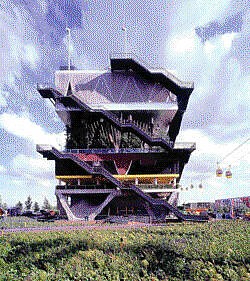
2005.09.13 17:05
"design" vs. "styling"
I'm more interested in the self evidence of it all. For example, I like the design of MVRDV's Dutch Pavilion, especially as presented in drawings and within the continuum of their oeuvre. I didn't so much like the Pavilion as built (at least from the images I've seen). And now there is no denying that the Dutch Pavilion is leftover trash, architecture that might be saved or that might be demolished. Overall (so far), the good reality of the design is outweighed by the bad reality of the design.
Is the Dutch Pavilion also stylized? It seems to be so in that a lot of it was also high-maintenance.
Will the design of the Dutch Pavilion ever be a true paradigm for future architecture? I'll say definitely maybe.
2005.09.14 13:40
"design" vs. "styling"
Style now-a-days is largely egalitarian. Almost everything produced today harbors some degree of style. Price (which is supposed to reflect quality) is really the only thing that differentiates styles.
Overall, Modern or contemporary architecture is not a very popular style for living in.
Big Boxes are very efficient designs with little or no style?
The more style added to architecture the higher the maintenance?
My personal style anymore defaults to "no class" offset by an enormous aversion to falsehood. It makes for an easier life due mostly to low maintenance requirements.
The design of my life, however, is very complicated because art is its ongoing goal.
2005.09.15 13:52
Mat buildings
Given that mat buildings have a strong precedent with Le Corbusier's design for a hospital of Venice, the notion of using similar mat buildings as part of the solution to New Orlean's architectural future isn't all that off the mark.
2005.10.01 12:29
HATE
Modern art always "projects itself into a twilight zone where no values are fixed, he [Leo Steinberg] said. "It is always born in anxiety." Not only that, he said, it is the function of really valuable new Modern art to "transmit this anxiety to the spectator," so that when he looks at it, he is thrown into "a genuine existential predicament." This is basically Greenberg's line, of course--"all profoundly original art looks ugly at first"--but Steinberg made the feeling seem deeper (and a bit more refined). The clincher was Steinberg's own confession of how he had first disliked [Jasper] Johns's work. He had resisted it. He had fought to cling to his old values--and then realized he was wrong. This filtered down as a kind of Trubulence Theorem. If a work of art or a new style disturbed you, it was probably good work. If you hated it--it was probably great.
Tom Wolfe, The Painted Word.
2005.10.11 11:50
Jimmy Venturi's new website...
Perhaps the latest chapter of Learning from Lacunae is "What a lot of architects pretend is not there."
2005.10.12 17:46
Jimmy Venturi's new website...
...like, is it all conscious or sub-conscious, or osmotic even. I like it too because the 'artifacts', the designs, speak for themselves within a much larger architectural continuum.
...and seeing No. 9 again here made me think of the early Gehry three-in-a-row houses in Santa Monica(?), and then a lot of the "glass/wall boxy" houses designed now. And a couple of weeks ago the "pitched roof house" thread and seeing the Vanna Venturi House among the contemporary stuff also brought a perception to my eyes that wasn't there before.
I'll go for the continuum idea as to where architecture is really at.
2005.10.14 13:57
Jimmy Venturi's new website...
In the Football Hall of Fame, the integral electronic billboard is prefect for adapted reuse, just program the sign with new content.
051030c Philadelphia mirror-copy plans
2093i17
2005.11.14 09:11
favorite book on Arch[itecture]
Le Corbusier 1957-1965
Volume 7 of the Oeuvre Complète
Virtually all the architecture in this book proved to be well ahead of it's time.
2005.12.02 11:35
Consumerism and Monumentality
I agree that there is a kind of hegemony operating within architecture today (and definitely since the Modern Movement/International Style), but architecture wasn't always that way. Most of architectures' histories are like languages' histories in that they were all tied/related to specific places on the planet and reflected the culture of those places.
Reflecting on what presently constitutes architectural "history," perhaps architecture is now a world trade commodity more than anything else.
Is the next big thing to mix up the fashion brands? Wear your Foster pants with Woods belt over Eisenman panties?
2005.12.05 16:00
Thom Mayne on Charlie Rose
First of all, presenting a sound-bite answer is not the issue here, especially since Rose gave Mayne a whole hour. Rose's question contained some leads, "is it politics?, is it style?" (I don't remember all the exact words), and given the question, I would have given the context of where I see Morphosis within architectural history, and then explained what the Morphosis design approach sets out to accomplish. I can't answer what Mayne would say himself, but that's the way I would have approached an answer to the question. What I thought after I saw Mayne's hesitation and then heard his answer is just how afraid and subsequently unable architects are at talking about style. But, more to the point, architects are afraid to discuss their motivation because a lot of the motivation (especially for Morphosis) is about creating a certain style.
style 1 : the way in which something is said, done, expressed, or performed
The notion of style in architecture has been so debased by Modernism's reaction to eclecticism that architects now don't even know how to talk about it.
2005.12.07
Re: reenactment
First of all, thanks for sending a wonderful letter. I've now read it twice and it's a great compact story, and full of lots of stuff I didn't know before. I find it interesting that Wren's Library at Trinity College may already be a reenactment of Michelangelo's Laurentian Library, and you, in turn, appear to be reenacting Wren reenacting Michelangelo at King's College. I'm now at the point where I see reenactment as a way of learning, and, like you say, "in new and surprising ways." Now, you're also 'reenacting' Gibbs' vocabulary, so the whole exercise manifests a conceptually tight 'history' lesson project.
A long time ago, I wrote that Beethoven's composing of a symphony is the enactment and thus every performance of the symphony, including the first performance, is a reenactment of Beethoven's composition. In this sense, your redesign of the Fellows' Building reenacts Henry VI's 'Will', in that you are 'performing' the composition of his will. (I think it is easiest to grasp this way of seeing reenactment if one sees Henry's 'Will' as the "original.")
Something in the back of my mind is telling me that I have seen somewhere (in a book) another built reenactment of Michelangelo's Laurentian Library, and I can't think of what that might be right now. If I do remember I'll definitely let you know. Are you aware that a Michelangelo's design of the Laurentian Library also included a triangular 'rare book room', at the end of the long gallery, which was not executed? Perhaps your design could 'complete' both Henry's and Michelangelo's 'Will'.
From what you've told me in the letter, you've come to understand reenactment (in design) as something that you were doing already for quite some time although you never thought of your design activity as specifically "reenactment." This is exactly how I came to understand reenactment--in 1989 I started to redrawn (using CAD software) Piranesi's Ichnographia Campus Martius, and then in 1997 I read about reenactment in Collingwood's The Idea of History, and soon after that I realized I was reenacting Piranesi, and then soon after that I realized Piranesi was reenacting ancient Rome in the Ichnographia. I think in both our examples it is clear that reenactment is not mere copying, rather it is an intricate and even dense learning experience. Just now I'm wondering if Henry's 'Will', i.e., the text of the 'Will' itself, is anywhere manifest within you design?
I did finish watching Brideshead Revisited two weekends ago, and it would be great if you and I could discuss (and watch together) it all in person--I'm sure that would be lots and lots of fun. It's too much to bring up everything here, but I'll relate what I thought this time when I heard Cordelia's (sp?) remark to Charles that Sebastian (and his 'suffering') is indeed truly "holy." Up till now I always saw Cordelia as the innocent sage who saw so much for exactly what it is, but now I don't see her 'perception' of Sebastian as altogether right. Instead, I see it too as part of the mist or light cloud of (dis)illusionment that hovers amongst the whole family, especially with regard to the (Catholic) spiritual. Suffering and Holiness do go hand in hand as far as Christ('s Crucifixion) is concerned, but Sebastian never really accepted that suffering is indeed what he would have to do (if he was ever to resurrect himself?). No doubt Sebastian continually suffered, but he had just succumb to suffering rather than really accept the challenge of suffering. (Gosh, I didn't expect to be writing that kind of stuff this morning!) I just did a thesaurus check of succumb in Microsoft WORD and thus I now see Sebastian Flyte (sp?) the Capitulator as opposed to Sebastian Flyte the Holy!
This past Sunday I successfully bid on a 36 page color (guide?) booklet on Castle Howard (1973 vintage) at eBay, and the post may deliver it by week's end. I'm actually excited. You know it is because of your starting the Brideshead Revisited thread/discussion at archinect that I now see the rendering of Castle Howard in Vitruvius Britannicus as (what I believe to be) the true inspiration of Piranesi's architectural design sense especially as represented in his Il Campo Marzio (of which the Ichnographia is just a part). A comparison of the aerial view of Castle Howard (and of Blenheim) in Vitruvius Britannicus (1715-1725) with the aerial views within Il Campo Marzio (1762) are very similar, both in viewpoint and in the 'style' of architecture portrayed. I have yet to see any direct reference that Piranesi ever saw Vitruvius Britannicus, but Piranesi's close personal relationship with Robert Adam in Rome very much puts it (Piranesi's seeing the Vitruvius Britannicus) well within the realm of possibility. Plus, the Ichnographia is dedicated to Adam, which may well indicate a dedication to the "imagination" of British architecture overall. (I think I already related this overall idea at archinect and subsequently at quondam, but I want to thank you personally for setting my mind on this path to begin with.)
2005.12.08 08:27
Thom Mayne on Charlie Rose
"Talking about style seems to imply that we are designing by imitation..." -- this is exactly what I mean by "style in architecture has been so debased by Modernism's reaction to eclecticism that architects now don't even know how to talk about it."
Designing via "intuitive gut reactions that fight against and/or inform mental process" is a style.
2005.12.08 12:03
serpentOMA's pavillion
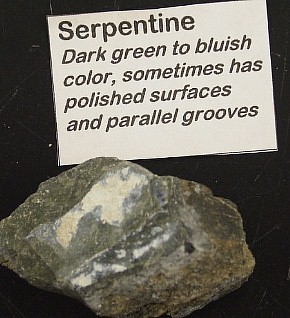
context: no contest
2005.12.08 12:32
serpentOMA's pavillion

sole solution
OR

not original enough
2005.12.08 14:37
serpentOMA's pavillion
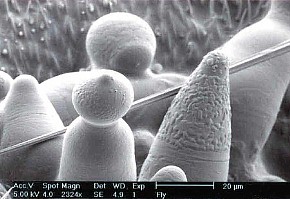

contentious
2005.12.09 16:13
Check this firm out
Schachtel Architektur
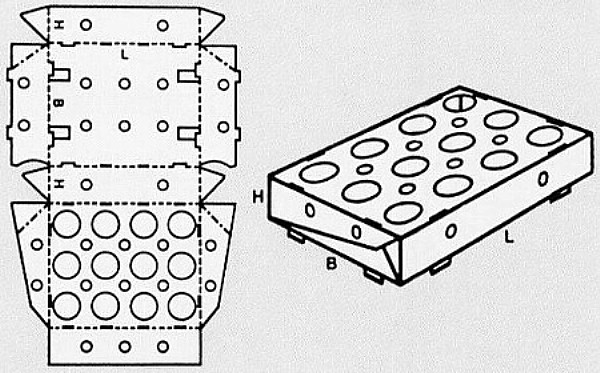
2005.12.09 15:17
2006 Pritzker Prize
die Projekten
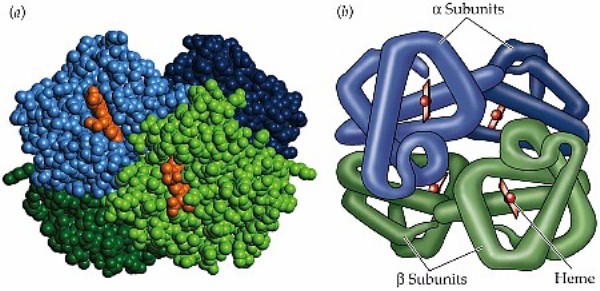
2005.12.10 16:07
What are you reading?
Bloomingdale's Book of Home Decorating by Barbera d'Arcy. Copyright 1973 First edition.
2005.12.11 10:19
Re: Michelangelo & Wren
What intrigues me about the Castle Howard as-built plan is the Long Gallery and the Chapel (which, by the way, is it a Roman Catholic chapel?), which do not show up in most of the history books I've seen the (Vanbrugh) plan in. What interests me is the resultant schizophrenic architecture. Looking more through the Castle Howard booklet last night, it became easier for me to locate all the various scenes of Brideshead Revisited.
Next year I'll devote some time to getting to know Vanbrugh, Hawksmoor and Wren architecture better. I'll then check out all the books you mention.
I did an Italian architecture study tour for 3 weeks in 1977. Michelangelo is probably the artist I hold in the highest regard. I did a lot of reading on Michelangelo in the early 1990s. Fascinating figure.
I've never been to England, and I'm sure I would love it. Alas, being a virtual tourist is the best I can do now.
2005.12.11 18:00
Check this firm out
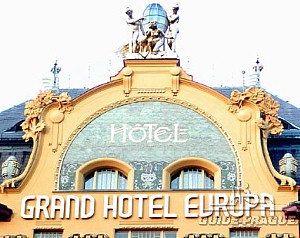 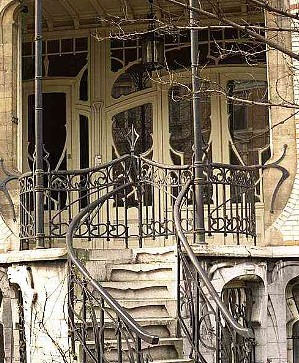
Ach, das Jugendstil heute!?
 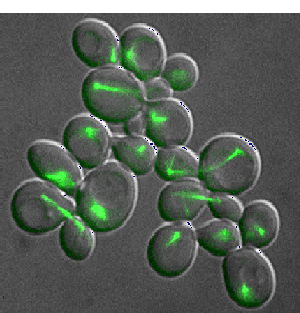
Entwürfe für die Schneckenhäuser von Schlittenfahrt
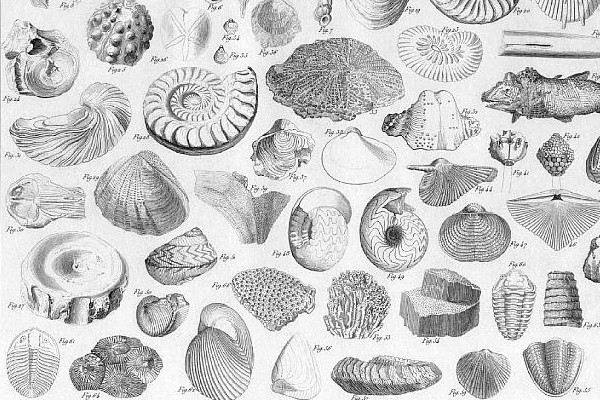
Mein Architekten

2005.12.12 19:46
Architecture as Signal
Mein Architekten

Über Alles!

|